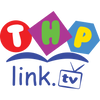
Introduction
Reading is not defined as the mastering of small separate skills. Research holds that reading is dynamic: a process by which the reader constructs meaning by interacting with the text. We now know that several interactive factors play dynamic roles influencing the ability to read: prior knowledge of the reader, type of material, application of strategies and purpose for reading.
A teacher may develop assessment strategies based upon three basic developmental stages of readers: Beginning, Developing and Fluent. Any reader may be at any stage given the familiarity of the genre being read.
The classroom program should reflect a three-stage process for the instruction of reading. Characteristics of the last two stages fallow.
The Developing Reader
- reads for pleasure regularly,
- reads to other people with ease,
- has personal purposes for reading,
- reads silently for an extended period,
- reads with enjoyment and discrimination,
- can state the theme or main ideas of a passage,
- shows awareness of characterization and theme,
- shows an interest in different genres,
- recognizes morals from reading,
- demonstrates a widening vocabulary,
- identifies supporting detail,
- skims and scans,
- recognizes and classifies information,
- draws conclusions and predicts outcomes.
- talks about personal responses,
- enjoys a wide range of fiction and nonfiction,
- understands author’s purposes,
- demonstrates well-developed research skills,
- synthesizes information from several sources,
- demonstrates insights in response to reading and viewing experiences,
- varies reading rate according to purpose,
- recognizes bias, propaganda, and messages,
- recognizes the tone of language in a text,
- forms and defends personal judgements about text,
- recognizes recurring ideas,
- understands how the printed word can comment and reflect upon a society,
- compares points of view in various texts.
Learn more about the reading process in the classroom at a grade specific level below.




























